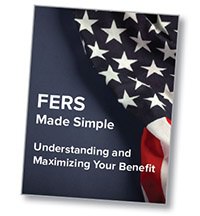Navigating TSP Withdrawals While Working and in Retirement
August 10th, 2022 | 5 min. read

The Thrift Savings Plan, or “TSP,” can often seem like an underrated part of the FERS program. Compared to the FERS pension, it may feel less valuable. In fact, your TSP can be the difference in achieving the retirement you’ve always wanted.
The only catch is that it all depends upon you. That means not only contributing and investing the right way based on your personal goals, but also taking money out efficiently to preserve your nest egg and avoid unnecessary taxes.
So, let’s look at how federal workers can navigate TSP withdrawals, both in-service and in retirement.
In-Service TSP Withdrawals
Within a TSP account, employees are allowed to take in-service withdrawals, which are withdrawals from your plan while still employed. These withdrawals are only available in limited circumstances, either as a result of a financial hardship or the attainment of a certain age.
Financial hardship withdrawals
Financial hardship withdrawals can be taken as a result of recurring negative cash flow, legal expenses for separation or divorce, medical expenses or personal casualty loss. You can only withdraw your contributions and your earnings on those contributions (no employer contributions), with a minimum request of $1,000.
The total amount of the withdrawal cannot exceed the actual amount of the hardship, which you must certify under penalty of perjury.
Age-based withdrawals
Age-based in-service withdrawals can be taken only when the employee has reached age 59 ½ or older. At this point, you may withdraw all or part of your TSP account balance. An employee may take up to four age-based in-service withdrawals each year.
Taxes on in-service TSP withdrawals
Any portion of an in-service withdrawal made payable directly to the employee will be taxable, unless the portion is transferred to an IRA.
Avoid this TSP withdrawal mistake
Be leery of advice to take an in-service withdrawal to purchase another investment product.
You don’t want to risk purchasing an investment product that is very expensive and/or illiquid. The TSP offers solid investment options to help accumulate assets for retirement. If someone recommends an in-service withdrawal, it is critical that you absolutely understand the benefits of doing so.
Retirement TSP Withdrawals
You’ve retired. Now what do you do with your TSP?
What you do with this money becomes even more important as you will need to start taking income from this asset to help cover your retirement expenses. At this stage of life, things like investment performance, excessive withdrawals and inefficient tax strategies can harm your family’s finances and the likelihood your account lasts throughout your retirement. And you may not be able to simply work longer to make up for these shortfalls.
Upon retirement, there are several withdrawal options available to employees in which to use TSP savings to help fund your desired lifestyle. It is important to carefully choose your withdrawal options as well as your withdrawal amounts. Excessive withdrawals can reduce the likelihood of a successful retirement. Meanwhile, overly frugal withdrawals could diminish your quality of life in retirement.
This aspect of financial planning should be done in conjunction with the assets of the whole family, including your spouse’s estimated retirement income. Taking this view will help guide you through decisions that impact your retirement income, your taxes and your ability to pass assets on to others upon your death.
Partial TSP withdrawals
You can withdraw a portion of your assets while saving the remaining balance in the TSP for later. There is no limit on the number of partial withdrawals you can take after separating from federal service (except that you won’t be able to take more than one every 30 calendar days).
Full TSP withdrawals (single payment)
This option allows you to withdraw the full balance of your TSP account, either as a lump-sum cash payment (taxable distribution) or transferred directly to an IRA (not a taxable distribution).
IRA transfer
An IRA transfer is likely the best option for most retirees. Although the TSP offers solid investment options to grow your assets while still working, it may not provide the diversity, tax efficiency, investment selection and flexibility that can better provide a reliable and sustainable stream of income throughout your retirement.
An IRA has the following benefits over the TSP:
- Greater diversification – The TSP often lacks the diversification needed to create a balanced, risk-controlled portfolio.
- Wider investment selection – IRAs offer retirement investors access to almost any investment available to help meet specific income needs and future.
- Flexibility – An IRA gives you the flexibility to purchase or sell investments as economic conditions or your needs change. Sometimes new investment opportunities or life events, such as a death of a spouse, will necessitate adjusting your investments to better align with your new needs or goals.
- Easy access to your assets – With an IRA you can quickly raise and access cash for expenses, especially for unexpected costs such as medical emergencies or home repairs. Of course, this ability can also be a drawback to those who struggle to control their spending.
- Active management – Investments in an IRA allow for active management of the portfolio. That means instead of holding funds that simply try to match the market, such as those in the TSP, investments are purchased or sold based on economic fundamentals in an attempt to hold investments that outperform the market.
- Pro-rata TSP withdrawals – When withdrawing money from an investment portfolio, assets need to be sold to generate the free cash. Many personal advisors have dedicated assets within an IRA specifically set aside for near-term cash flows and will sell these (and only these) as cash is needed. All withdrawals from the TSP sells evenly across all investments according to the size of each investment (if an important stock fund takes up 25% of the account, 25% of the withdrawal amount will be sold from this fund.) Better management of these withdrawals can be maintained within an IRA.
TSP Installment Payments
This option allows you to receive monthly, quarterly or annual payments, either as a fixed-dollar amount or based on your life expectancy. You can change the amount and frequency of your installment payments – and stop and start payments – at any time.
You may also change from life expectancy payments to a fixed-dollar amount, but only as a one-time change. (Once you choose to receive fixed-dollar payments, you cannot switch to the life expectancy option.) TSP payments based on your life expectancy should be avoided. It may sound like a good idea, until you live longer than your life expectancy.
Annuity
If you select this option, the TSP purchases an annuity on your behalf that is payable monthly to you for the remainder of your life or your spouse’s life. This option can be elected using the full balance or a portion of your TSP. The annuity is purchased from a private insurance company.
Although guaranteed monthly income may sound attractive, the annuity option has some major drawbacks. They are expensive – the cost of commissions can be quite high and will not go towards your benefit. Annuitizing your TSP will remove your ability to take out additional money when unexpected expenses occur or as living costs increase. Also, you will be unable to pass on an inheritance upon your death unless you spend additional money to add these benefits.
Remember, under FERS you already have two non-variable assets for retirement: Social Security and the FERS Pension Basic Benefit ("monthly annuity"). No matter what happens, these two assets will continue to pay a prescribed amount every month that will increase over time with cost-of-living adjustments. Your investments should be left available to provide a key strategy for generating income and growing assets.
If you have any questions about managing TSP withdrawals from your account, contact an Advance Capital Management financial adviser for help!
Learn more about government retirement benefits, including the FERS basic benefit, the Thrift Savings Plan and other retirement planning steps, by downloading our free, easy-to-understand guidebook, FERS Made Simple: Understanding and Maximizing Your Benefit.

As a financial adviser, Kurt takes a comprehensive approach to help clients work toward their financial goals by providing wealth management tools including retirement planning, investment portfolio advice and tax strategies. He specializes in federal government benefits and is a Chartered Retirement Planning Counselor.

